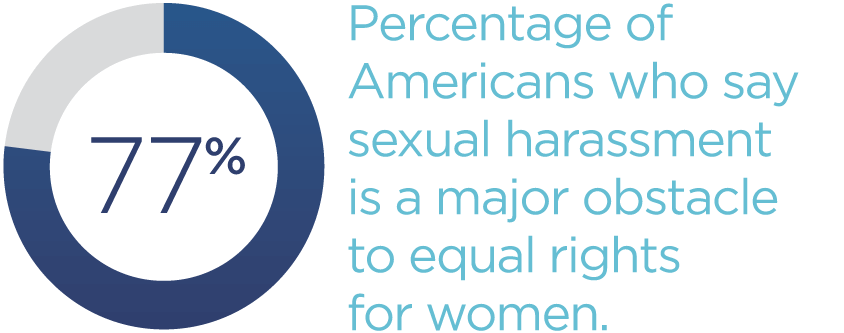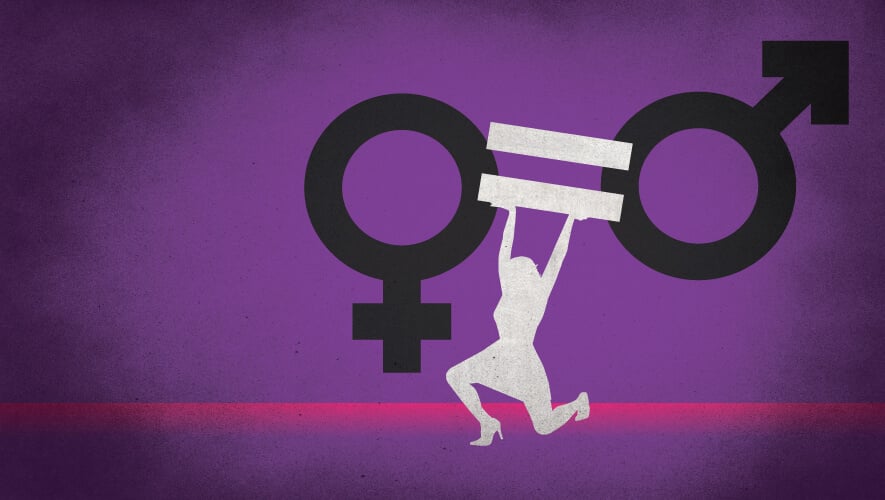Sexual Harassment, Discrimination Block Gender Equality
A majority of U.S. adults say the country has not done enough about gender equality. Even though many believe there has been progress in the last decade, sexual harassment and societal expectations stand in the way.
According to a recent Pew Research center survey, A Century After Women Gained the Right to Vote, Majority of Americans See Work to Do on Gender Equality, of those who think the United States still has work to do in achieving gender equality, 77 percent say sexual harassment is a major obstacle to equal rights for women. Other barriers cited are legal rights (67 percent), differing societal expectations for men and women (66 percent), and not enough women in positions of power (64 percent). Family responsibilities were cited by 43 percent of respondents as a major obstacle as well.
The vast majority of Americans surveyed (97 percent) said it is very or somewhat important for women to have equal rights with men. While 76 percent of Americans surveyed said women’s societal gains have not come at men’s expense, 22 percent say men have lost out in some way as society approaches gender equality.
The workplace is a key battleground when it comes to gender equality, the survey found.
When asked what gender equality would look like, 45 percent said equal pay, and an additional 19 percent said a gender-equal society would have no hiring, promotion, or educational opportunity discrimination. Among women surveyed, one in 10 said women would be more equally represented in business and political leadership. Equal respect for men and women within the workplace was cited by 5 percent of respondents.

The COVID-19 pandemic is further exacerbating existing gaps between men and women in the workplace. According to a July study from Washington University in St. Louis, the University of Melbourne, and the University of North Texas, women may face long-term employment penalties as a consequence of the pandemic. The study, conducted from February to April among 60,000 U.S. households, found that mothers of young children reduced their work hours four to five times as much as fathers, growing the gender gap in work hours by up to 50 percent. By and large, fathers’ work hours had not changed.
The researchers warned that the growing gap in hours worked may result in a greater chance that upcoming promotions and raises will go to fathers and nonparents who continued working full hours during the crisis.
While mothers may be putting in fewer paid hours, they are likely working more than ever. According to the United Nations (UN), women did nearly three times as much unpaid care and domestic work as men before the pandemic, but school closures and stretched healthcare systems have increased their workloads.
“With more than 1.5 billion students at home as of March 2020 due to the pandemic, existing gender norms have put the increased demand for unpaid childcare and domestic work on women. This constrains their ability to carry out paid work, particularly when jobs cannot be carried out remotely,” the UN noted in an article, “How COVID-19 Impacts Women and Girls.”
“Women’s unpaid care work has long been recognized as a driver of inequality with direct links to wage inequality, lower income, and physical and mental health stressors,” the article continued. “As countries rebuild economies, the crisis might offer an opportunity to recognize, reduce, and redistribute unpaid care work once and for all.”
